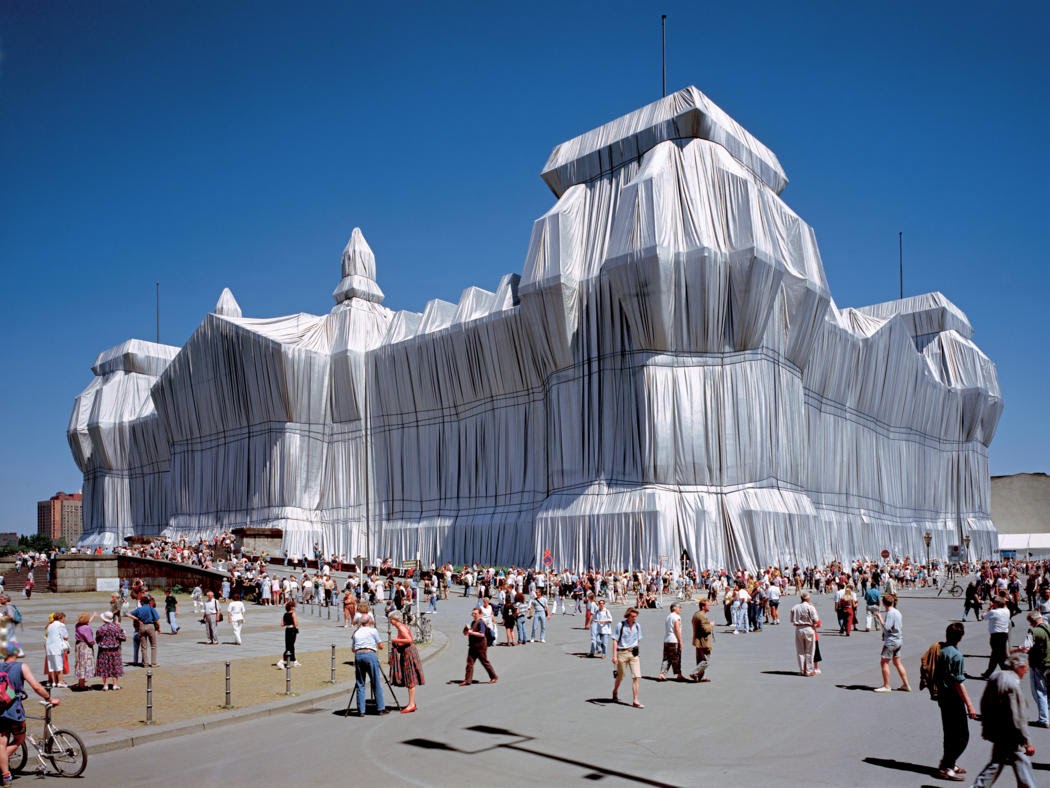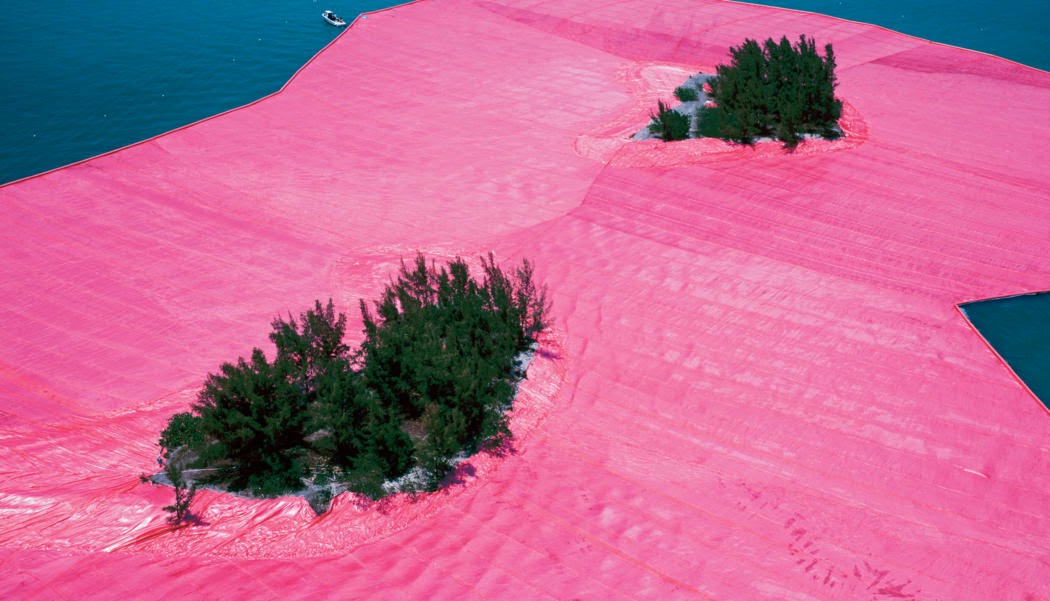“The work of art is a cry for freedom.” (Christo)
Have you ever wondered how art can transform not only spaces but also perceptions? Christo and Jeanne-Claude, both born in 1935, he in Bulgaria and she in Morocco, formed an artistic partnership that has indelibly marked the landscape of Land Art.
They met in Paris in 1957 and formed a couple. both in life and in art. Their biography is a journey through visionary projects that have left a lasting impression on the art world. This post I want to share with you their extraordinary career and the profound meaning of their works.
Christo e Jeanne-Claude
Sometimes it is necessary to cover in order to reveal reality, to veil in order to look. This is the meaning of the work of Christo (1935) and Jeanne-Claude (1935 – 2009). A couple in art and in life. Christo was the artist, while Jeanne-Claude was the organiser.
They dedicated their lives and their artistic partnership to packing monuments and landscapes, becoming the most important representatives of Land Art.
The images of the long sheets wrapping cliffs or historical monuments are fascinating and make what is hidden more evident, forcing us to think more carefully about their presence.
Since 1972 all of their work has been photographed exclusively by Wolfgang Volz, while for at least five of their major works a documentary film has also been produced by Albert and David Maysles.
THE EARLY WORKS OF CHRISTO AND JEANNE-CLAUDE
Christo and Jeanne-Claude met by chance in Paris.
He had fled the Stalinist regime and found refuge in France, working as a painter. It was during an assignment to portray Jeanne-Claude’s mother that the two met. From that moment on, a lifelong collaboration began.
In 1962 Christo and Jeanne-Claude realised one of their first artistic projects: the Wall of Barrels on Rue Visconti in Paris. This work, consisting of 89 metal barrels, turned a street into a dead end for eight hours, becoming a powerful symbol of protest against contemporary political events, first and foremost the construction of the Berlin Wall.
After Paris, the duo embarked on a series of even bolder international projects.
In 1969, Christo packed a portion of Sydney’s coastline with erosion-proof fabric, creating a monumental work called ‘Wrapped Coast’. This was only the beginning of a series of ‘wrappings’ that included sites and monuments around the world, from Spoleto to Milan, from Berlin to the United States.
THE WORKS OF CHRISTO AND JEANNE-CLAUDE IN THE UNITED STATES
In the United States, Christo and Jeanne-Claude created some of their most famous works. 1972, in Colorado, they created the ‘Valley Curtain’, a 380 m long orange curtain that divided a vast valley.
This work, like many of their installations, was also ephemeral in nature and therefore dismantled shortly after its creation.
The artist duo’s installations are known for their monumentality but also for their transitory nature. Each work, once completed, was dismantled, leaving the landscape as it was before. A powerful message about temporariness and visual impact in art.
The couple has always believed in artistic freedom, financing the impressive installations themselves. Between creations, funds were raised by selling sketches and drafts of future works or photos and videos of previous installations.
Everything was organised in such a way as to finance the next work.
After Jeanne-Claude’s death in 2009, Christo promised that there would be no more new projects but only the realisation of those already conceived together.
The last work Christo realised was the footbridge over Lake Iseo in 2016.
Christo died in 2020 but there was still a project to be realised: the wrapping of the Arc de Triomphe in Paris.
In 2021, Christo’s nephew Vladimir Javacheff and the Centre Pompidou realised the project according to the instructions given by the artistic duo before his death.
The Parisian monument has been packed for several weeks.
Christo and Jeanne-Claude not only transformed landscapes and structures but also changed the way we perceive art. Their unique vision and innovative approach to Land Art remain landmarks in the contemporary art world.
Through their works, they have invited viewers to have a personal and unique experience, changing our understanding of the world around us.





